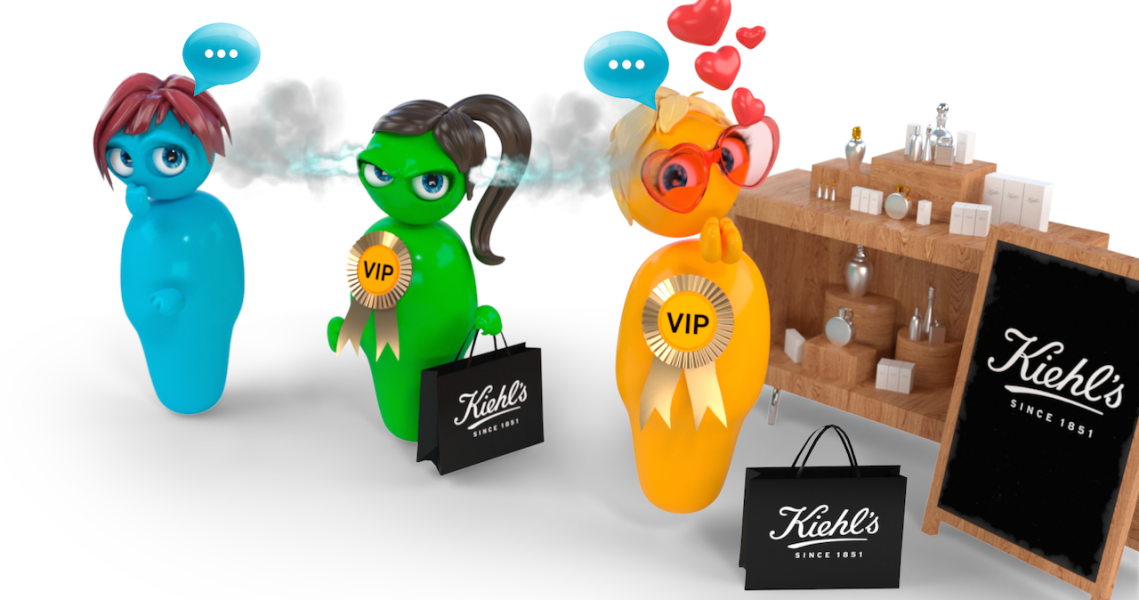As e-commerce purchases continue to overtake in-store purchases, the Australian divisions of Lancôme and Kiehl’s are trying to mimic the benefits of physical retail in their e-commerce strategies.
While online purchases of health and beauty products boomed in Australia (growing faster than any other category, at 29% year over year as of 2018), L’Oréal-owned brands experienced challenges. The brands’ individual websites lacked standard back-end infrastructure and services — for example, it had no live chat function, a slow shipping policy and featured an outdated appearance. That hindered the customer service experience, said Matthijs van der Putten, L’Oréal Australia CMO. In updating customer experience, at the same time as the other outdated features, L’Oréal opted to first focus on creating a back-end platform for customer service representatives to talk to consumers via live chat. L’Oréal hoped employees could then better understand prior consumer engagement and address product concerns and grievances around shipping.
L’Oréal Australia is much smaller than the company’s U.S., Europe and China divisions, both in terms of e-commerce sales and overall sales. As of 2018, 11% of L’Oréal Australia sales were online. The company is aiming to boost that to 20% by 2028, according to the Financial Review. In earnings, Australia is lumped in with all Asia-Pacific countries; however, individually, both Kiehl’s and Lancôme earned at least $1 billion a year globally and both saw double-digit sales growth in 2019, according to L’Oréal’s fourth-quarter 2019 earnings call.
“My challenge is that the e-commerce market in Australia is growing rapidly, and my objective is to increase the number of live chats and make our team more proactive in creating them,” said van der Putten.“I do see the conversion results when [customers] are using it.”
The back-end customer service program, called Inside, uses a digital rendering of a store where online customers are represented as digital avatars to customer service representatives. That way, a representative can better view where a customer is in their shopping journey and how they are feeling, before even trying to engage in a conversation. For example, if the avatar has a suitcase, it means the customer is visiting the Australian website from another country. If the avatar is blue, it’s their first visit. Yellow is for a return visit, and green means the customer is logged into an account. Avatars also have faces, which can quickly show representatives whether a customer appears angry or happy, based on their activity on the website. For example, if a customer is logged in on the website and appears to have ordered a product a week ago, the customer service representative can begin a dialogue (via a pop-up on a customer’s screen) asking if everything is OK.
Within L’Orèal Australia, there are 30 people in a call center who handle customer service, and five of them are currently trained to use Inside. Van der Putten said that, by June, Inside will also be available to Armani Beauty and YSL Beauty. Since Lancôme and Kiehl’s first implemented virtual customer service in 2018, both brands have seen a 430% increase in purchase rate when a customer chats with a representative. And 21% of customers using the tool make a purchase.
It helps that avatars are triaged: They show representatives which customers urgently need assistance (with an unhappy face) and those more likely to convert, such as an avatar lingering near a virtual checkout counter. The representative can begin a dialogue with more tailored phrases, such as, “Hi, I’m a skin-care specialist,” rather than a generic, “Do you need help?”
Ad position: web_incontent_pos1
“What’s different between the online and the physical world is that the service is very different,” said Hadar Paz, Powerfont co-founder and CEO, which worked with L’Oréal to develop its customer service. “Often a website is a boring catalog, and it’s up to a customer to make the call on their own about purchasing a product.”
Hadar and van der Putten both agree that e-commerce is headed in a more human direction online; thus, the two companies are focused on bringing back concierge and high-touch services digitally. Van der Putten said that he believes people never truly preferred communicating with bots, but they merely accepted them as status quo for online shopping. With the rise of social commerce apps like WeChat and Whatsapp, where customers can talk to beauty advisers through messaging and then make an in-app purchase, customers are reminded of what service used to be like.
“We have seen a shift in preferred communications channels, and we have to go with the preference of consumers,” van der Putten said. “The future of e-commerce is moving away from websites and toward [the user experience of] messaging apps.”




